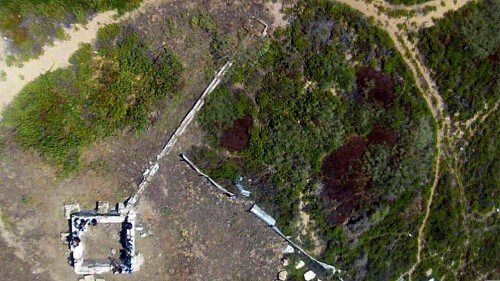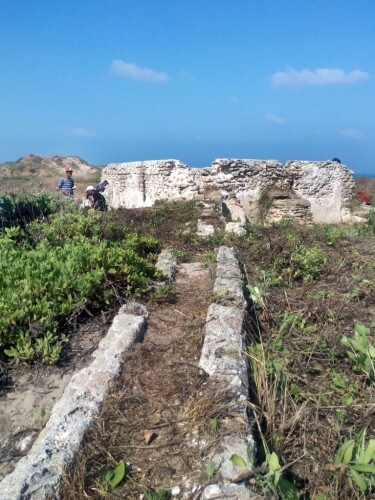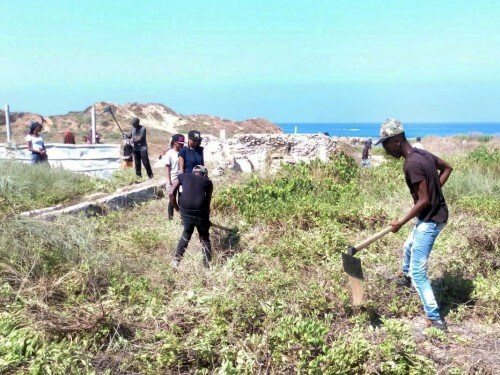The project was initiated by the Mishlema Lipo and the Antiquities Authority

Cleaning by teenagers at the Yavne-Yam antiquities site last weekend revealed a 1500-year-old Byzantine irrigation system, for the benefit of visitors to the Palmahim Beach National Park. The work was carried out as part of an employment project for youth from Jaffa - which is a project of the Mishlema Jaffa with the Antiquities Authority. This, as part of the restoration and excavation of archaeological sites, which the youth undertake during the summer vacation. I think you can also say simple youth...
The irrigation system was excavated in 1997-1996 by Dr. Eitan Ayalon on behalf of the Antiquities Authority, as part of a study conducted by the Eretz Israel Museum on ancient agriculture, and as part of the Yavne-Yam excavation expedition led by Prof. Moshe Fisher from Tel Aviv University.
For years, the impressive system was hidden from the eyes of visitors, due to the growth of thick vegetation in the place. The Antiquities Authority picked up the gauntlet and began - with the help of young people working on behalf of Mishlom of Jaffa - the job of cleaning and restoring the irrigation system.
According to Yitzhak Mermelstein, archaeologist of the Rehovot region of the Antiquities Authority, "in the framework of the restoration of the site, the youth were exposed and exposed, for the first time, to the ways in which they obtained water in ancient times. The young people bring with them a breath of fresh air to the field, they make a significant contribution to uncovering the country's past, they work well, ask questions and learn about the findings discovered in the excavations. During the work they touch the past and thus also connect with it. Now, with the end of this blessed and strenuous work of the youth, visitors to the beach will be able to enjoy the sight of the impressive irrigation system, which until now has been hidden from the public eye."

During the cleaning work, the parts of the irrigation system were re-exposed, which included, among other things, a well, on which a chain containing Antillia jugs was installed. The chain went up and down with the jugs to the depth of the well using a rotary drive system, which was harnessed to an animal that walked on a fixed circular walking track. Once the jugs were full they would rise up and spill into a well constructed and plastered upper storage pool. After that, the empty jugs would go down, and God forbid.
After the pool was filled to the brim, the water was pumped through two clay pipes into small plastered pools.
The facility dates back to the Byzantine period, when the irrigation system was built. The bulk of the find included many coins from the years 538-491 that were uncovered near the pool, and jugs found around the irrigation system. At the end of the Byzantine period, the system fell out of use and remained in Shimmona until it was rededicated in the Mamluk period.
The Antiquities Authority aims to bring the public in general and the youth in particular closer to their historical roots. During the summer vacation, many teenagers are employed in archaeological excavations all over the country. Among other things, working in the excavations are boys and girls aged 16 and older who are on vacation from school, students from pre-military preparatory schools, and more. The authority invites the youth to contact it through the website and work in a meaningful, important and contributing job, at a fair wage.

